
by Grryo Community | Feb 27, 2017 | Stories, You Are Grryo
Rainy day in Saint-Malo, Brittany, French West Coast. Cloudy sky. Sea spray. Soft and salty droplets carried by the wind. Walk by the sea on a rainy day and smell the perfume of the sea. The Ocean breeze.
Sometimes umbrellas are open. Dark or light spots sprinkled in a seascape with grey tones. The black and white come alive; the texture arises and catches the eye. Slowly. The umbrellas swing, quietly, to the rhythm of wandering walkers.

Stormy weather. Sometimes the weather is less clement, the sky changes, the wind rises, dark clouds are running in the sky, walkers hurry to shelter from the rain that arrives, from the wave that splashes, from the sprays that sting. With the high and low tides, the weather changes quickly by the sea, the sun comes back, it illuminates the landscape and the walkers, it warms the colors, it dries everything, and the umbrellas close again immediately.

My umbrella walkers are often alone. Contemplative. Lost in their thoughts. Looking towards the horizon. Immobile or in motion, anchored in a marine landscape that offers every day a new way of looking at it, even in rainy weather. Whether on the beach, in the cobbled streets, on the Sillon, the floor offers a different light to photography. Black and white act as a poetic revealer. It reinforces the effect of loneliness, accentuates the melancholic or meditative atmosphere, tells an unfinished story, a story to be written.
Go out and take pictures on a rainy day. Walk with the rain, or against it, feel the wind, the raindrops, the spray on your face. Observe the sky and the surrounding landscape, slow down and feel.

A walk through the rain and maybe a photo at the end of the road. This is the path that I follow on Instagram with no specific purpose. At random. Black and white photographic peregrinations written with commas and dots. To be continued…
I warmly thank Grryo for letting me share some of my Brittany here with you. Thank you for this beautiful lighting. Let the beautiful part of photography, writing, creation, documentary, art, a visual aside that opens the eyes and heart, congratulations to them. We are Grryo.
Tiphaine, @tiphdiadel, in real life, works in publishing ; on Instagram, walks with a smartphone ; founder of @bnw_bretagne : a photograph and a story, another look on Brittany.

Embruns. Balade en bord de mer, chapitre 2.
Un jour de pluie pluie à Saint-Malo. Ciel chargé. Embruns marins. Gouttelettes douces et salées portées par le vent. Se balader en bord de mer, un jour de pluie et sentir le mélange des fragrances marines. Air marin. Parfois les parapluies sont ouverts. Taches sombres ou claires parsemées dans un paysage marin aux tons gris et délavés. Le noir et blanc s’anime alors, la texture surgit et accroche le regard. En douceur. Les parapluies se balancent, tranquillement, au rythme de la marche des promeneurs.

Temps orageux. Parfois, le temps est moins clément, le ciel change, le vent se lève, des nuages larges et sombres courent dans le ciel, les promeneurs se hâtent alors pour se mettre à l’abri du grain qui arrive, de la vague qui éclabousse, des embruns qui piquent soudain. Avec la marée, la météo change vite en bord de mer, le soleil revient, il illumine les paysages et les promeneurs, il réchauffe les couleurs, il sèche tout alentour, et les parapluies se referment aussitôt.

Mes promeneurs au parapluie sont souvent seuls. Contemplatifs. Perdus dans leurs pensées. Le regard tourné vers l’horizon. Immobiles ou en mouvement, ancrés dans un paysage marin qui offre chaque jour une nouvelle façon de le regarder même par temps de pluie. Que cela soit sur la plage, dans les rues pavées, sur le Sillon, la texture du sol offre un éclairage différent à la photographie. Le noir et blanc agit comme un révélateur poétique. Il renforce l’effet de solitude, accentue l’ambiance mélancolique ou méditative, raconte une histoire inachevée, une histoire à écrire.

Sortir et photographier par un jour de pluie, en bord de mer. Marcher avec la pluie, contre la pluie, au gré de la pluie, c’est sentir le vent, les gouttes fraîches, les embruns sur le visage. Observer le ciel et le paysage alentour, ralentir le ryhtme, sentir.

Une promenade et peut-être au bout du chemin une photo. C’est le sentier que je suis sans but précis. Au hasard. Des pérégrinations photographiques en noir et blanc écrites avec des virgules et des points de suspension. À suivre…
Un immense merci à toute l’équipe de Grryo de m’avoir accueillie une nouvelle fois. Laisser la part belle à la photographie, à l’écrit, à la création, au documentaire, à l’art, une parenthèse visuelle qui ouvre le regard et le cœur, bravo Grryo.
Tiphaine, @tiphdiadel, dans la vie, travaille dans l’édition ; sur Instagram, jse promène avec un smartphone, a créé @bnw_bretagne : une photographie et une histoire, un autre regard sur la Bretagne.

by Grryo Community | Feb 24, 2017 | Stories, You Are Grryo
While perusing my photographs from the last year, I was surprised to notice that I had started photographing women much more often than men. But not just women in general, it was women who seemed to be preoccupied or burdened by something, suspended in their own quiet space, within the milieu and movement of the city around them. How had I developed such a pattern photographically without even being aware of it? It was only in writing this story that I began to explore why I was drawn to these solitary female figures in which I saw subtle expressions of the same anxieties or unease that I had felt at varying stages throughout my life.


Of course anxiety or unease is not confined to women alone, and I have been attracted to photographing this quality in men as well. But the sheer volume of female subjects over the last few months suggested to me there was something more to it and I began to explore the tensions and dichotomies in my own life that had been sources of anxiety, but were also related specifically to being female:
I have felt empowered by being considered youthful, attractive and seductive, yet disempowered by being objectified and undervalued.


I have felt empowered by being independent and career focused, yet disempowered by being judged for being single or not having children.


I have felt empowered by finding love, getting married and settling down, yet disempowered by my single female friends who felt I could no longer relate to their struggles.


I have felt empowered by being older, wiser and more confident, but disempowered by the stresses of family and society’s changing view of me in the face of physical ageing.


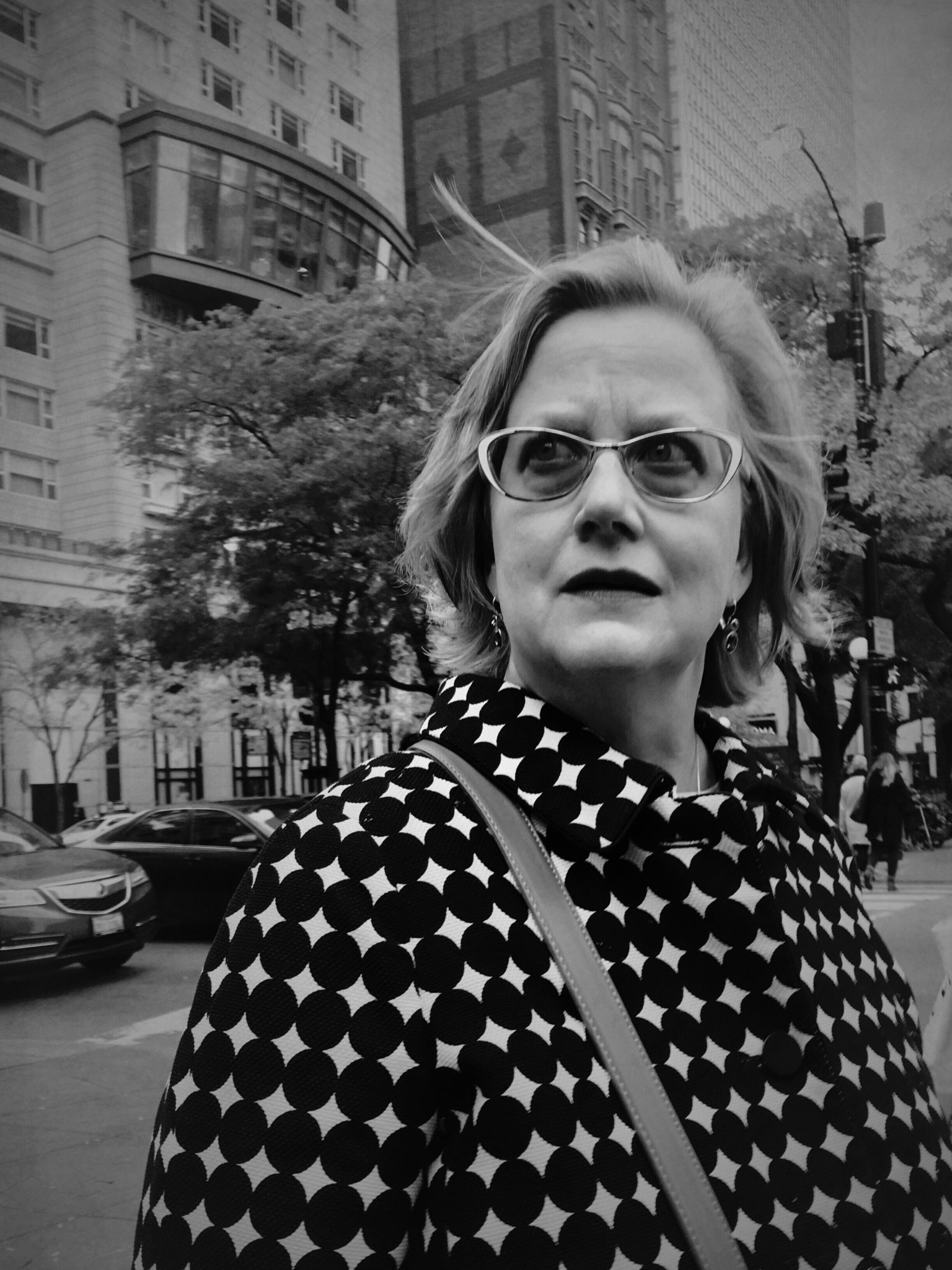
I use the word empowerment because in all of these women I have photographed, I see an underlying strength, a steely persistence beneath the expressions of concernment or vulnerability which outweighed and outplayed any feeling of ‘disempowerment’.
I began thinking about Laura Mulvey’s infamous writings on the ‘male gaze’ in her essay Visual Pleasure and Narrative Cinema. Mulvey argues that Hollywood cinema, for the most part, follows the patriarchal ideology of society and (without realizing it) places the audience into the perspective of a heterosexual man. “In a world ordered by sexual imbalance, pleasure in looking has been split between active/male and passive/female”, denying the woman her human identity and objectifying her. As a female street photographer in a primarily male dominated photographic medium, my focus on women then becomes twofold—I am inherently interested in women because I am one of them, but I am also able to challenge the philosophy of the male gaze by finding those women that project expressions and personalities that force the spectator to look deeper, beyond the surface— in other words, I want to photograph women because they have a story to tell, not because of their inherent ‘to-be-looked-at-ness’. To be sure, the story they have is one which can only be guessed at and one which will be intrinsically shaped by the viewer’s own worldview and experiences, as I demonstrated in the abovementioned examples.
Having observed and admired the work of other street photographers who find ‘scenes’ to photograph – whether it be two or three people interacting, or a person caught amidst diverse elements in the environment (for example a bus going by, a bird flying into the frame) – I persist with trying to capture the person, and only the person. In isolating the solitary figure, and highlighting their expression, the viewer is prompted to look within, rather than around, for the story.
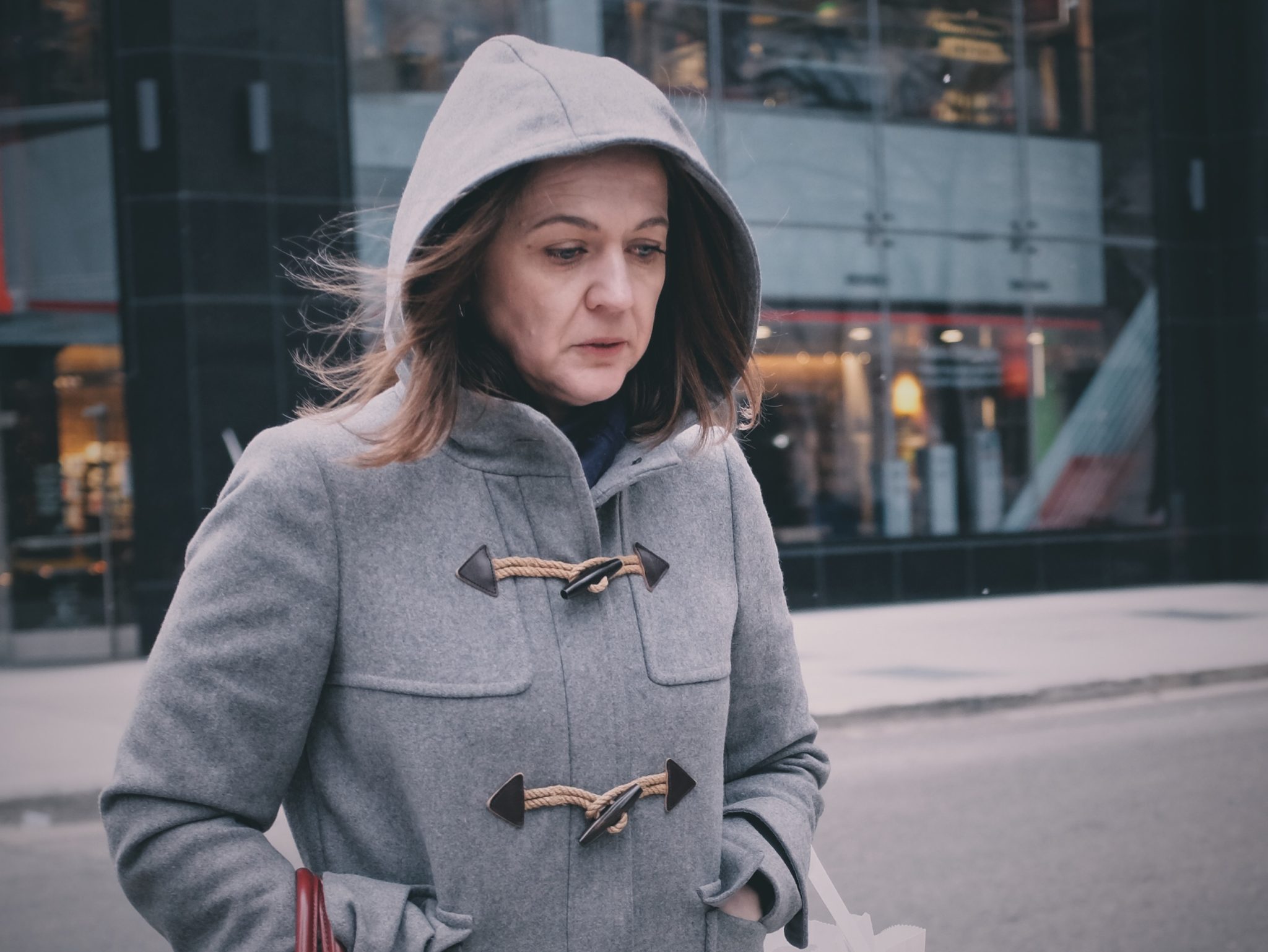
In the same way I had begun to think differently about the female faces I had been photographing, I also began pondering my series of ‘faceless’ women. I had taken a number of these, never staged. I was fascinated by the way their expressiveness came through in their posture and that there was always a narrative to be found not in their gaze, but in what they gazed upon. It felt like all of them were searching for something, and looking cautiously but optimistically ahead, again suspended for a moment in their own contradictions. What were these contradictions or these struggles? What were they searching for? The goal of street photography is never to deliver answers but to raise questions.
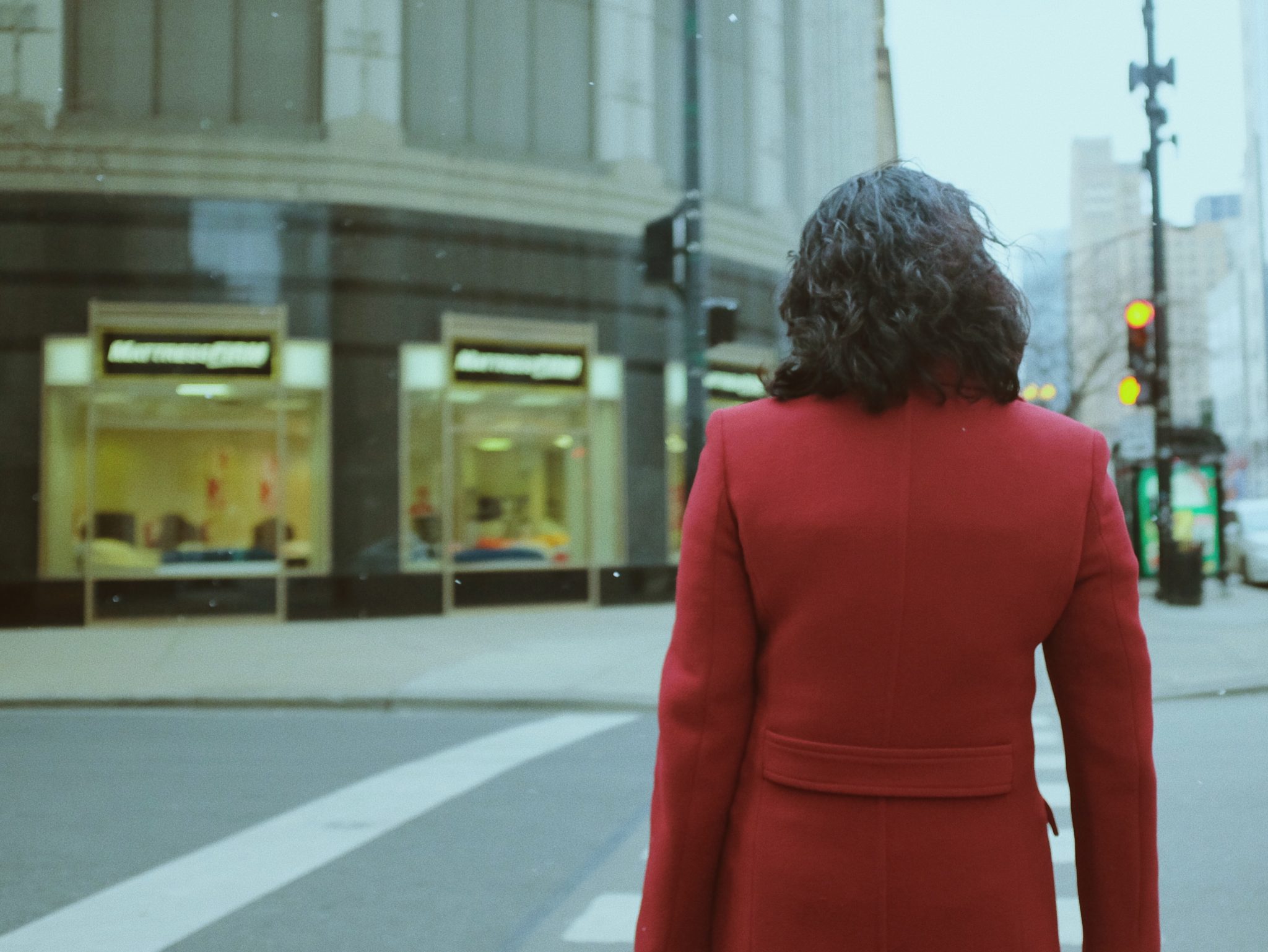


Lauren Louise is a street photographer based in Chicago, IL. You can find her on : Website | Instagram

by Grryo Community | Feb 17, 2017 | Anne Closuit Eisenhart, Still Life, Stories, You Are Grryo
I remember, as a child, fumbling in the complete darkness of my bedroom. The clock having just struck my morning anxieties, and myself heading toward the window to summon the day into the room. Rolling up the night around the slats of the blind, the picture of the wakening day gradually unfolding before me. I usually paid little attention to it. A glimpse that made me feel both reassured that the world was still out there, and worried my school was too.

Some mornings had a different feel though. As soon as a glimmer of daylight crept into the dark, I already knew at its particular brightness that the day would hold different promises. It had snowed and perhaps it might keep snowing!

When I reminisce over the snow days of my childhood, I cannot single out or describe this or that particular day with its own distinct facts. Yet alive in me are a set of moments spreading from this time, grouped in my mind by a similar naïve joy, etched with such emotion that my memory has decided to gather them into one souvenir.
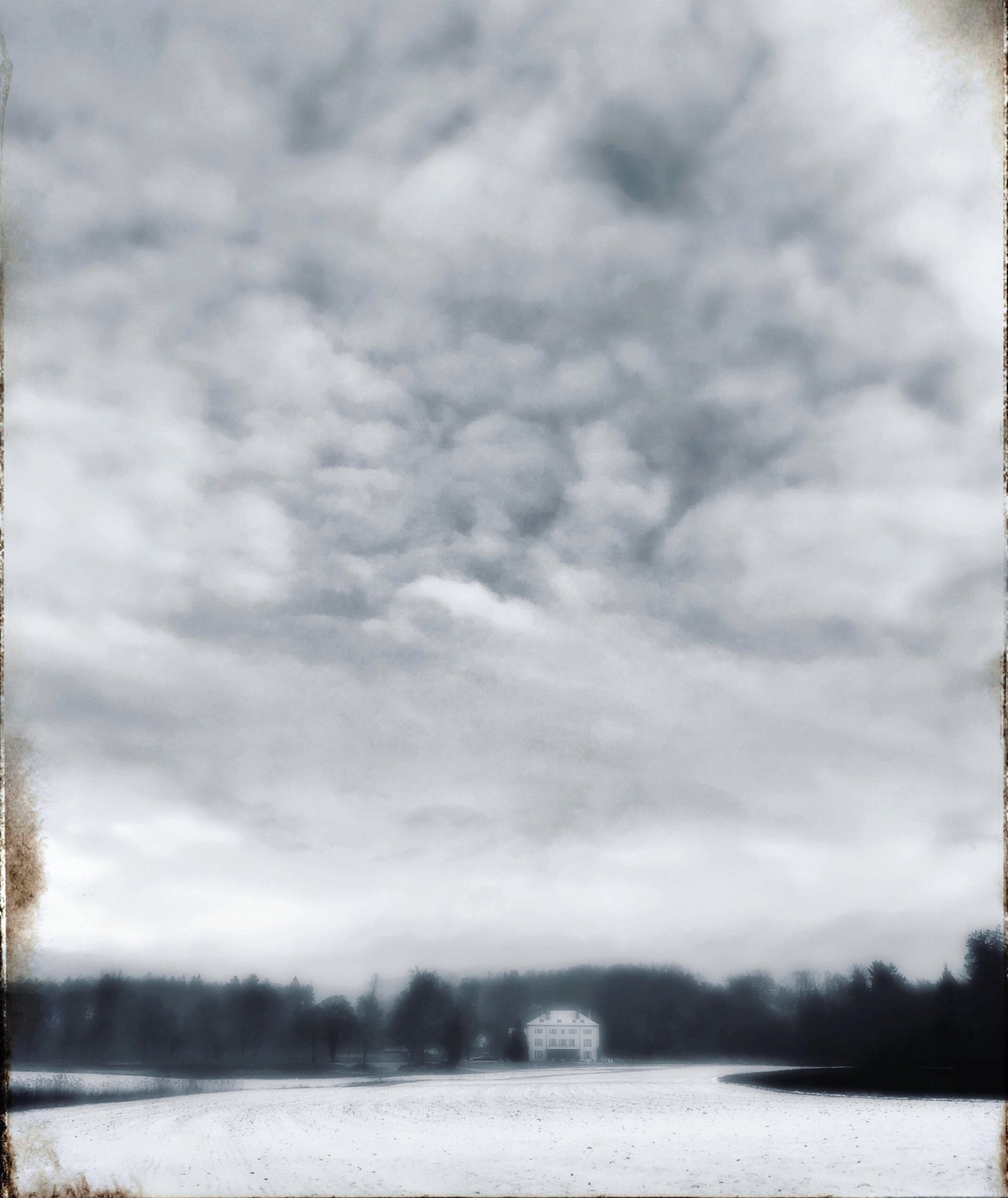
And I can see myself, pulling a chair by the window and watching the snow come down slowly over the wet plain, settling silently in the hollows, on the roofs, seizing the roads and the alleys, covering the ugliness brought on by the day. Then, having made everything even, everything level, it is forced to accept it must fall on itself. At this point, one’s attention is no longer drawn to anything and ceases to recognize. And now one can only see one’s own images projected on the white screen offered by the winter.
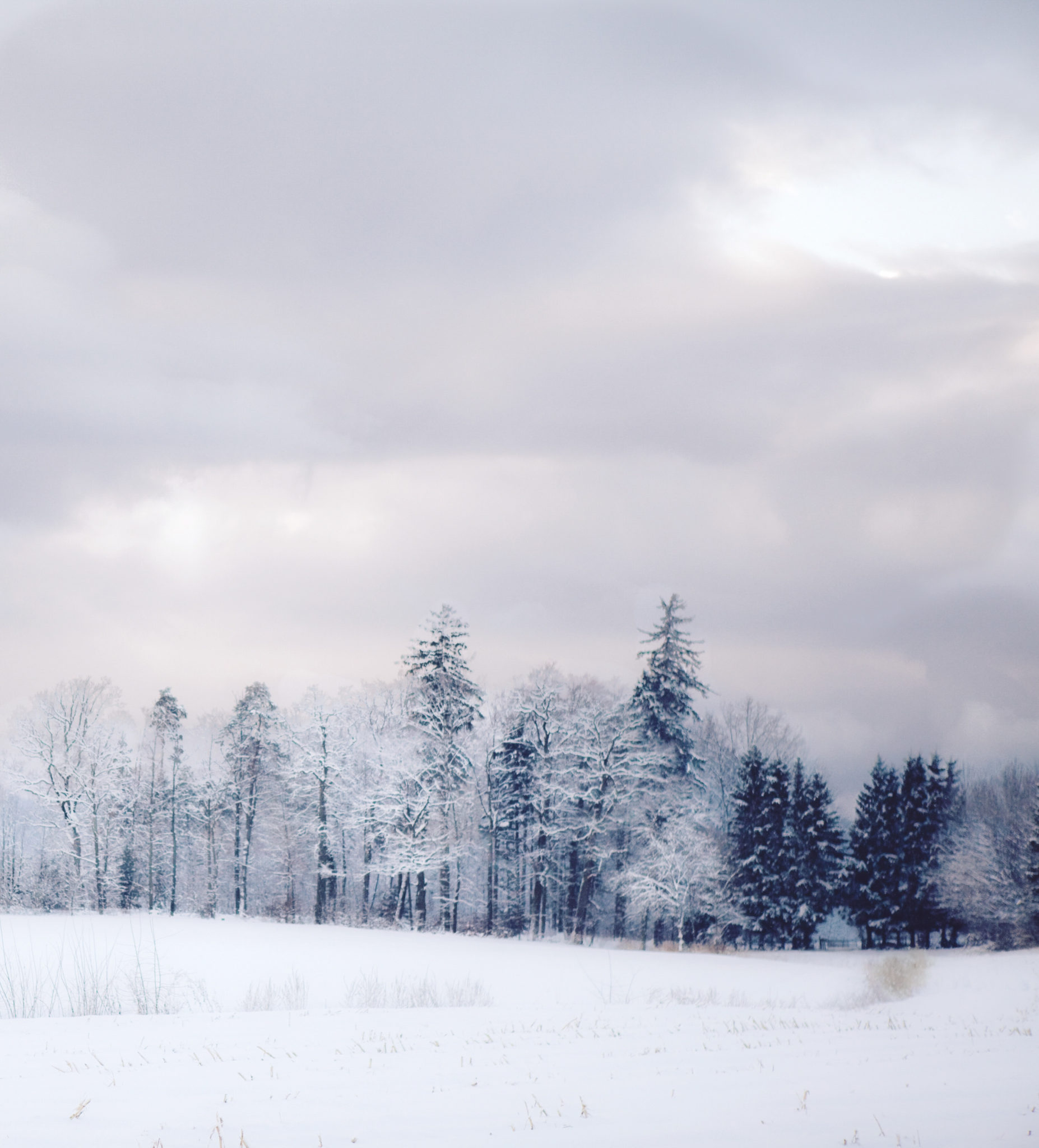
Or, I was outside. Snow had stopped and I was trying to identify parts of the scenery, my playground, my bicycle under a bump. And it was like attempting to read a book in a foreign language, familiar enough to follow the story line, yet not the details.

To this day, I prefer winter to any other season. Not only the snow, but the cold that enlivens or numbs. The fury of the wind when it blows the leaves off and gives them back to the earth, which later chews them and gobbles them up. I enjoy this harshness and this severity. People meet and get to the essential, because it is too cold to linger and tell more.

I enjoy the monotonous landscape. The nature when it depletes, gathers itself, and mourns. The ground that is brown then grey then white then dirty. The flight of the birds that is shorter and heavier. The way they suddenly flock into bands, ruffle the trees and the electrical cables. The ones that decide to remain lonely.

I enjoy watching the night as it awakens the day with the city lights turning on one by one like fireflies on a summer night. The shadows are longer, more present in the home. Our lives languish, it is a slower time, allowing us to look backward. As when walking in the snow, we have to stop and turn around in order to see our own tracks.

And last, I enjoy winter when it shies away, out of breath, and suddenly gives way to perpetual renewal, to the sweet illusion we call Spring.
Anne Closuit Eisenhart is @lesfifoles on Instagram
Ode à l’Hiver – Par Anne Closuit Eisenhart
Je me revois, enfant, avancer à tâtons dans le noir de ma chambre. Le réveil venait de sonner mes angoisses matinales et je me dirigeais vers la fenêtre pour convoquer l’aube dans la pièce. Tandis que j’enroulais la nuit autour des lamelles de mon store, se déroulait à mesure devant moi le tableau du jour qui s’éveillait. Je n’y prêtais d’habitude aucune attention particulière. Tout juste un regard qui me rassurait car le monde était toujours là, et qui m’inquiétait car mon école aussi.
Certains matins, il en allait différemment. A peine un rai de jour se glissait-il dans l’obscurité que je savais déjà, à l’éclat spécifique de la lumière, que la journée tiendrait d’autres promesses. Il avait neigé et peut-être neigeait-il encore…

Quand je me remémore les jours de neige de mon enfance, je ne peux bien sûr pas décrire telle ou telle journée précise avec ses faits bien à elle. Mais continue de vivre pourtant en moi un ensemble de moments s’étalant dans ce temps, regroupés dans mon esprit par une même joie naïve, inscrits avec suffisamment d’émotion pour que ma mémoire décidât de les réunir en un souvenir.
Et je peux me voir, tirer la chaise près de la fenêtre et regarder la neige descendre lentement sur la plaine humide, s’installer, silencieuse, dans les creux, sur les toits, s’emparer des routes et des chemins, recouvrir la laideur amenée par le jour. Puis, quand elle a rendu tout égal, quand elle a tout nivelé, se résoudre à tomber sur elle-même. Alors le regard n’est plus arrêté par rien et cesse de reconnaître. Et l’on ne fait plus que voir ses propres images intérieures se projeter sur l’écran blanc que nous offre l’hiver.

Ou encore, j’étais dehors, il avait cessé de neiger et j’essayais d’identifier le paysage, mon terrain de jeux, mon vélo sous une bosse. Et c’était comme tenter de lire un texte dans une langue étrangère suffisamment familière pour qu’on en comprenne la trame pas assez cependant pour qu’on en saisisse tous les détails.
Aujourd’hui encore, je préfère l’hiver à n’importe quelle autre saison. Pas seulement la neige, mais aussi le froid qui vivifie ou engourdit, la fureur du vent qui arrache les feuilles des arbres et les rend à la terre qui les mâche puis les engloutit. J’aime cette rudesse, cette âpreté. Les gens se croisent et se disent l’essentiel car il fait trop froid pour en rajouter.
J’aime le paysage monotone. La nature qui se dépouille et se recueille. La terre brune puis grise puis blanche puis sale. Le vol des oiseaux qui est plus lourd et plus court. Cette façon qu ‘ils ont soudainement de se mettre en bandes, d’hérisser les arbres, les fils électriques. Ceux qui décident de rester solitaires.

J’aime guetter la nuit quand elle réveille le jour, et regarder les lumières de la ville s’allumer une à une comme des lucioles un soir d’été. Les ombres sont plus longues, plus présentes dans la maison. Nos vies se traînent, c’est un temps plus lent, fait pour regarder en arrière.C’est comme quand l’on marche dans la neige, il faut s’arrêter et se retourner pour voir ses pas.
J’aime enfin l’hiver quand il se dérobe et, à bout de souffle, cède la place à l’éternel recommencement, à la douce illusion qu’est le printemps.
Anne Closuit Eisenhart est @lesfifoles sur Instagram

by Grryo Community | Feb 13, 2017 | Stories, You Are Grryo
You can tell a lot about a person by what they photograph
There are the ones who photograph their meals at a restaurant, positioning each element carefully. There are those who only photograph their kid’s laughter and smiles to keep them young forever. Some photograph for archival purposes, as a “note to self”. I choose all of the above. I choose to document every aspect of my life in photographs.
I have a fear of forgetting. Our memories are unreliable. We’re selective, recalling the bits and pieces we feel are most important. So whenever I see something too beautiful for words, something that makes me laugh out loud, or just something I want to share with someone later, I get out my iPhone and capture it. I want the moment to live on so I’ve developed a habit, an obsession some may even say, of digitally recording.

San Francisco city view from Bernal Heights Park during the golden hour, just before sunset. Shot on iPhone 6, edited with VSCO.
I love themes, especially in photography. My reoccurring theme is San Francisco. If you look close enough you’ll find it hidden everywhere. My favorite subject to shoot is the Golden Gate. There’s something about the red/orange hues, the pillars of strength, the fog weaving in and out; it’s an indescribable feeling I have whenever we meet.

San Francisco’s Golden Gate bridge from Vista Point, Sausalito. Shot on Canon 5D Mark III with 50mm f/1.4 lens.
San Francisco has always been a magical place for me. I can remember being excited as a kid to spend the day in the city with my dad and sister or brother. It was usually just to a “touristy” area like Pier 39 or Fisherman’s Wharf (my dad loves the clam chowder). I had no idea there was so much more to discover in this enchanted land and I wouldn’t for several years.

Signage in Fisherman’s Wharf, San Francisco.
Maybe it was the cheesy souvenirs, the sweater weather, the food, the crowds the sea lions attracted, or the people who walked the streets with purpose and freedom. I honestly have no idea what happened to make me fall so hard for this city but it started way back then. I’ve grown up since but never out of love; my first love.

San Francisco skyline from the Larkspur Ferry.
I look back at pictures taken of me from disposable film cameras standing in front of random, insignificant things and I’m struck by one familiar theme, an uncontrollable smile.
Throughout our lives we go through many ups and downs though we tend to recall the negative more than the positive. I’ve lost myself too many times but I’ll always find myself again, in this city.

Mission Dolores park in San Francisco, November 2010.
I haven’t always been as passionate about photography as I am now. Though I’ve pursued photography for many years, over a decade of my life, there were a few chunks of time between when my camera and I were distant from one another. Each time might be for a different reason relating to that season of my life but looking back now, I know the underlying reason that connects them. I hadn’t found my muse yet.
I’m not advocating you sit and wait for inspiration to strike to pursue photography or any form of creativity for that matter. Instead I encourage you to go after it. Inspiration isn’t something you can search for, it has to find you working.
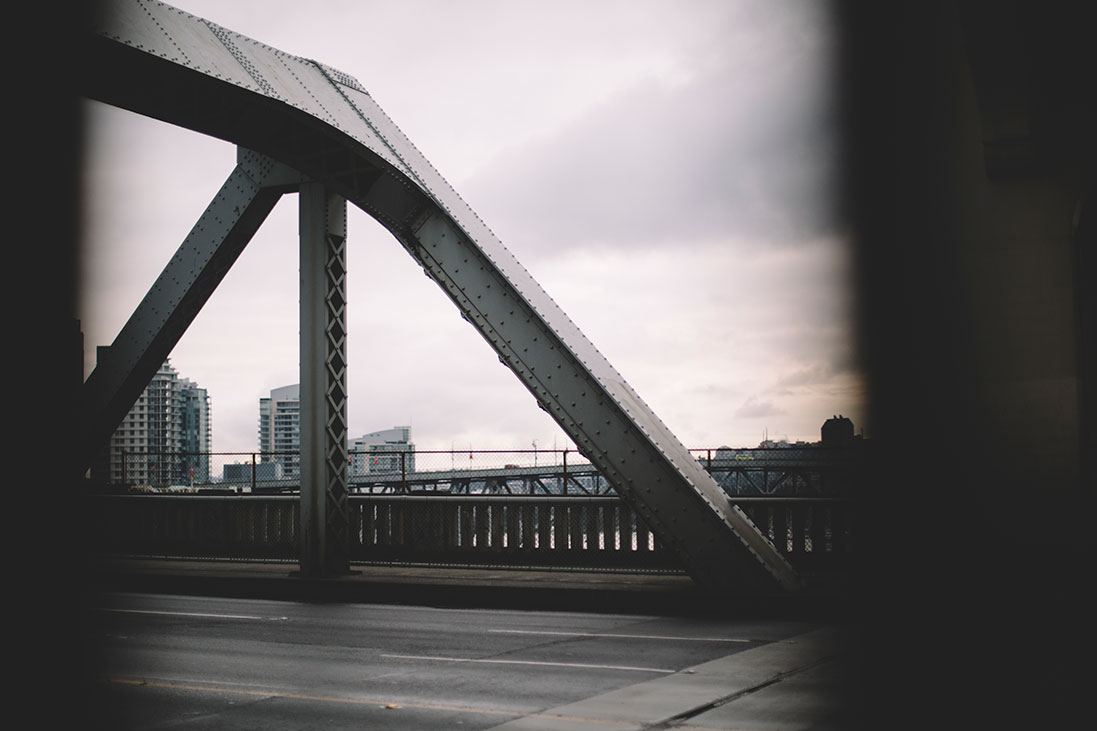
Walking across the Burrard bridge in Vancouver, British Columbia. Shot on Canon 5D Mark III with 50mm f/1.4 lens.
Learning to see the world in a new way
At first photography was something I did on a vacation or a mini road trip away from home. It was about capturing the moments to remember them later. But slowly I began to see the world in a new way. That’s what photography does to you. You see things differently, you notice what others don’t. And this is the exact reason you are meant to be a photographer, to share your vision with those who can’t see it for themselves.

Shot on iPhone 6 with Lensbaby mobile lens, edited with VSCO.
A personal journey
I’ve always felt photography is a personal journey and perhaps that’s why it took me so long to share my work with others. Art stems from a private place inside. Sometimes the artist doesn’t understand the reason they’re drawn to create, they only feel the pull. Photography is no different. I couldn’t tell you why I felt such a strong connection to the medium, I only knew I needed to keep going.

Burrard bridge in Vancouver, British Columbia. Shot on Canon 5D Mark III with Lensbaby Composer Pro 50 lens.
Transforming your muse into photographs
You have a muse too. Maybe you already know what it is or maybe you have some more soul searching to do. Either way, when you find it you’ll know. I can tell you from experience it’s worth the wait. Sometimes it’s a person, a specific object, or in my case a place. It varies from one artist to another.

Seattle cityscape from the Space Needle.
The only way to speed up the process of finding your muse is to keep photographing. It’s going to take a lot of bad photographs before you find the ones that light a spark in your heart and lead you down the path you’re meant to follow. Keep shooting, keep practicing and never stop experimenting. If you’re bored with one genre of photography, pick up another. There are no rules to finding your muse except you can’t give up.

San Francisco’s Golden Gate bridge from the Marin Headlands. Shot with Canon 5D Mark III with 50mm f/1.4 lens.
Looking for a little inspiration to get you out there shooting and improving your photography skills?
Check out Fall in Love with Photography, a free 7 day photo challenge to kickstart your photography! Every day for one week you’ll receive a new photo challenge right to your inbox. Each challenge features a theme with plenty of tips and ideas to get your creativity flowing. Click through to join and get started!

To find out more about Monica you can find her on monicagalvan.co and Instagram @mlynngalvan
Monica Galvan is a photographer based in the Bay Area of California. She specializes in San Francisco cityscapes and urban environments with a vintage touch. She also teaches aspiring photographers how to find their visual voice with photography at
monicagalvan.co

by Leandro Leme | Feb 2, 2017 | Leandro Leme, Staff Picks, Stories, You Are Grryo
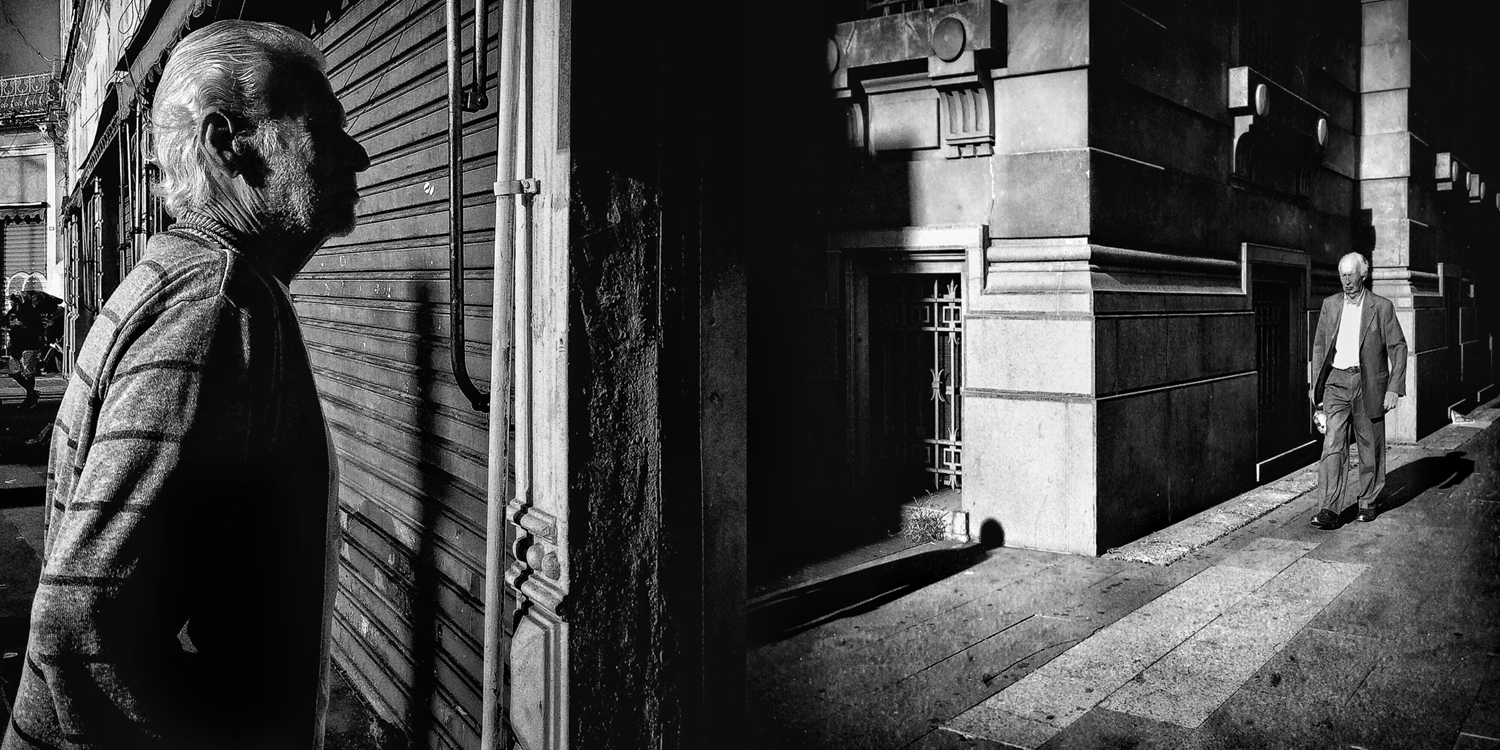
The labyrinthine streets spread like cracks on the downtown area of São Paulo. I walk shouldering my way through the crowd, keeping the man in my line of sight.
The street I chase him on is older than the very foundation of the city. It already was a path crossed by animals and natives along the forest, before the Society of Jesus forged a spiritual connection with the Madhat Pasha street in Damascus. São Paulo was meant to be the Heaven’s Capital on Earth — so it’s written on the letters exchanged between the Jesuits. Truth is, it became a kind of El Dorado of Brazil. Drifters from all over the country seeking fortune on this piece of land, mostly failing nowadays.

I’m trying to make some sense of my woolgathering. It comes with the job, I suppose.
The job isn’t new — you’ve already seen the story. Maybe you even took a part on it. It all comes down to someone wishing something one can’t have.
I could tell my client exactly how the story ends, but I wouldn’t get paid for playing Sherlock. The job has taught me that seeing is important. People are drawn to suffering like moths to lamps — a kind of messed up script hardwired in our brains.
I’m not a monk to delve into the philosophy about it, nor a scientist to prove it. I tell what I see, that’s all.
I wait for the man to exit the restaurant. He’s oblivious to me, although I’m a little too big to ignore. He’s alone, without the briefcase. I know where he’s headed to, so I decide to go somewhere else.

São Paulo was known as “the land of drizzle”. Things have changed during the last decades — for the worse, if you ask me.
It’s Autumn, but it doesn’t feel like it. This temperature could be Summer in any northern hemisphere country. I wonder if the heat loosen the reins of civility here, making people less patient, less good tempered.
Regardless, businessmen march with their dark suits and bright ties on the shadows of financial buildings. They march side by side with the ever growing homeless population, ignoring them behind their sun glasses, puffing on cigarettes and checking their phones. Billboard men on every corner wear plaques advertising gold and diamond brokers, shady attorney services, the sale of doctor’s notes for paid absent days at work. They have blank stares and tanned, cracked skin because of the sun. I wonder where their minds wonder.


I see the woman where I already knew she was. It’s a matter of pattern recognition. People are much more predictable than they think.
When she gets tired of waiting, I follow her. I debate for a moment about my options here. I decide to play by the rules of common sense.
She walks like a ghost, dragging invisible anchors and lost in her reveries. I wait by the old phone cabin as she takes a turn and faces the sun, as if this path could lead her to some kind of enlightenment. Or maybe it’s just me, seeing her story as mine. Pattern recognition.
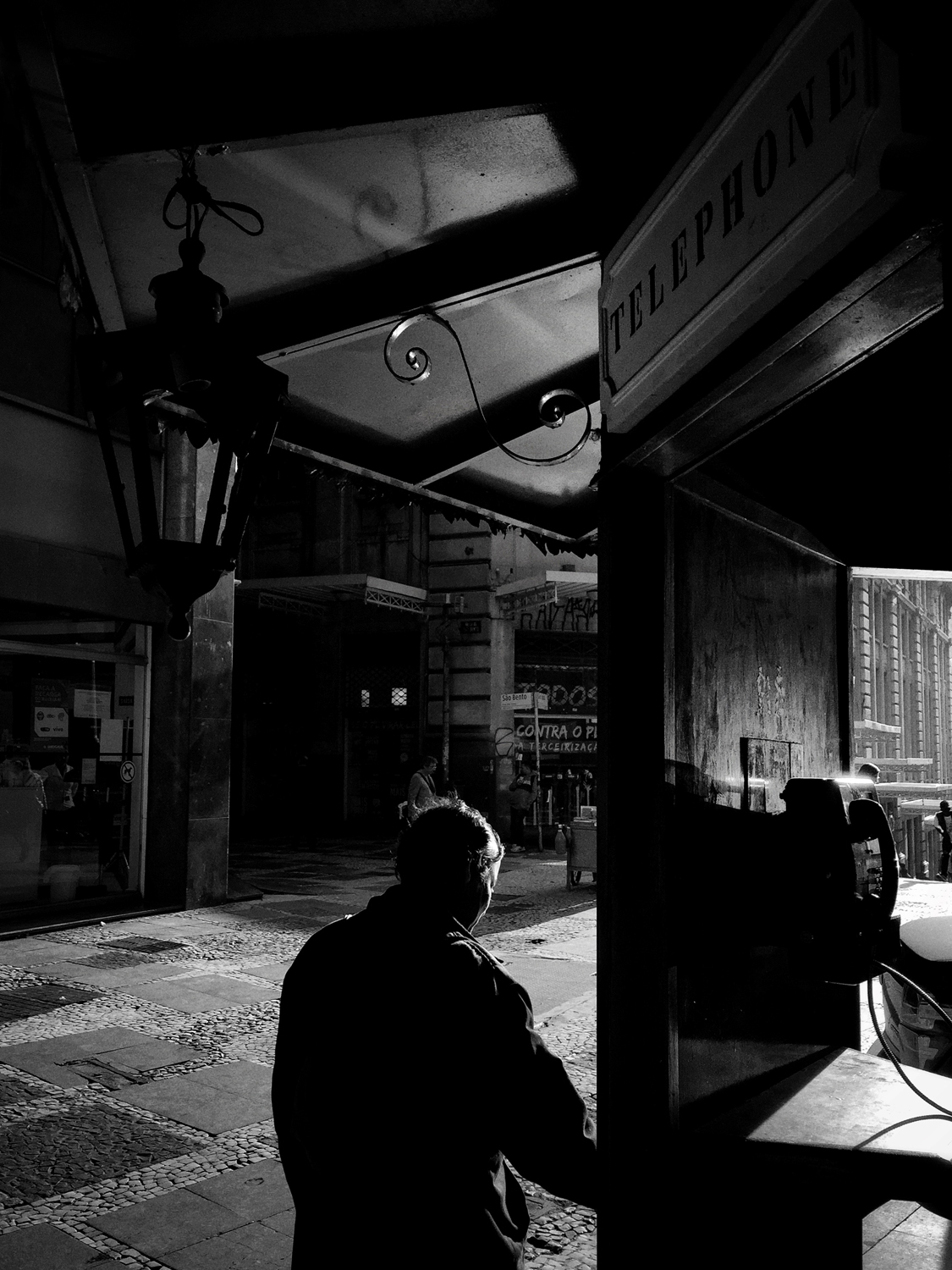
She enters a small store and leaves with the bag. She wanders through the streets until we arrive at the site of the city’s foundation. I remember that before the Society of Jesus, this place was a cemetery for many indigenous tribes. They met here to bury their dead and to negotiate. Death and contracts seems to be always hand in hand in a twisted way.
The Imortal Glory stands tall, on the top of the stone column, as a guide for the lost. I write the time and place in my notepad and take one last shot as the woman walks to the bus stop.

Then I leave her, hearing the whispers of my own demons feeding on my thoughts. I debate again about my options here.
There are certain rules I promised to never break again – which doesn’t means it won’t happen. There are things much stronger than promises in this world.
This city is a spawn of such things. So is this job.

From all the stories about São Paulo, there’s one that seems like a prophecy for the dwellers of these dirty streets. An omen I constantly see between the lines in every case, like a signature of Fate, although few know about it.

There was a Portuguese pirate living on the coast, about 40 miles from where the Jesuits would settle. He was the most merciless Indian hunter at the time, killing most of the men and enslaving the women for his pleasure. But things suddenly changed.
History tells he was not only converted by the priests — joining their mission — but became a feverish believer and preacher among the native Indians. One day, when the Society of Jesus decided it was about time to expand their influence, it was the former pirate who picked the shortest straw.
He left towards the unknown landscapes beyond the Society’s settlement and crossed paths with warriors from a local tribe. And you can guess what happened next. A rain of arrows left him bleeding to death under the blazing sun.
One of the Jesuits later wrote in his letters that “the Lord would establish His Church, now that He had bathed the foundations with so glorious blood”.
A city founded by religious missionaries, with a promise of Heaven, consecrated by the murder and the blood of a former pirate.
This job has taught me that promises of light are bound to hard shadows. All the contracts signed with Fate have secret dark pages we can never read.
I feel a lot like this city.
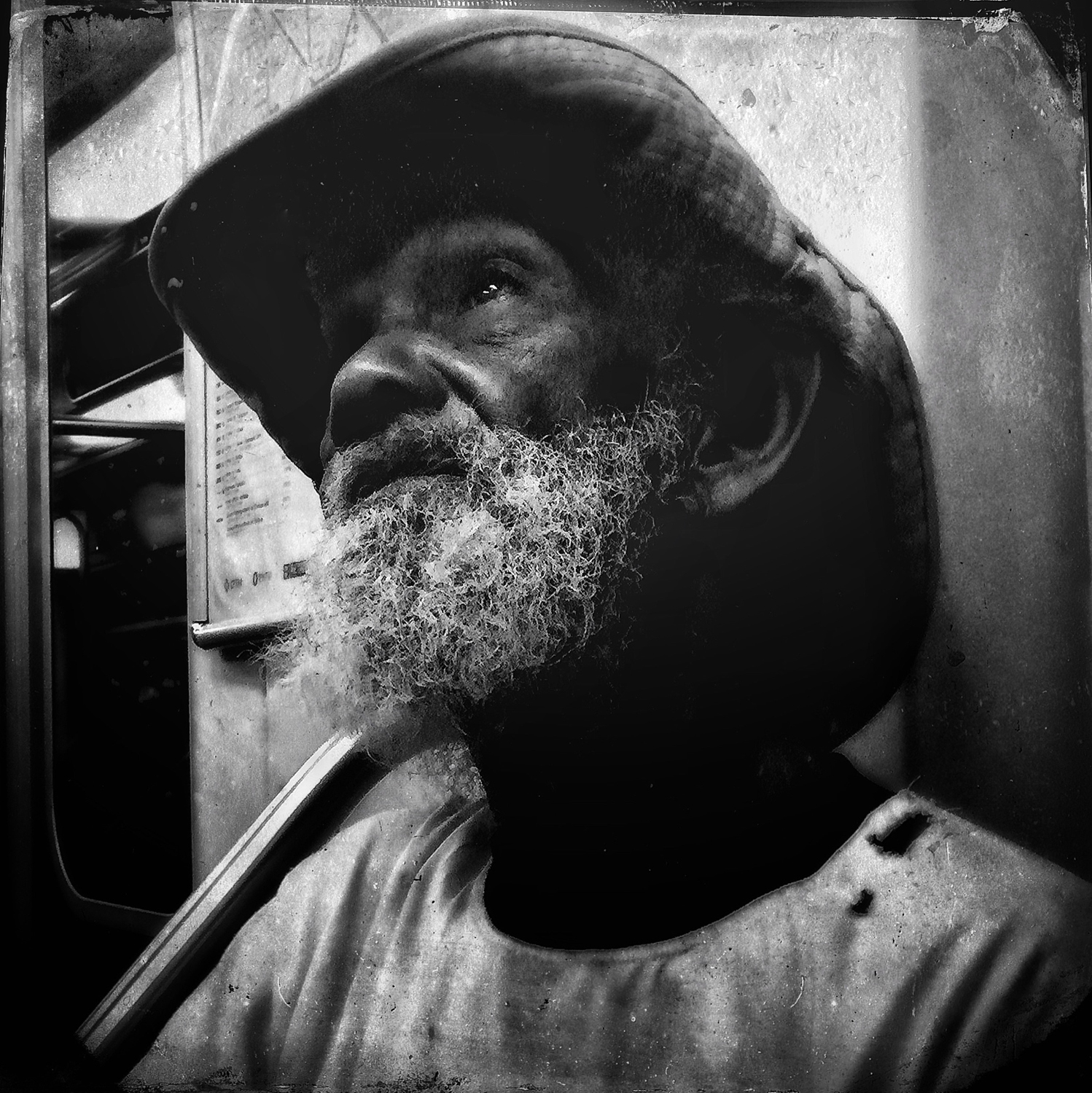
The phone rings on my way back to the office. I see the client’s name on the screen and I ignore the call, but I know he will be waiting for me. Moths and lamps.
I keep walking aimlessly for a while collecting faces and silhouettes. The man lights the cigarette but seems like confessing on the sidewalk. Another man sees when I point the camera at him and leaves with a suspicious look. For a brief moment I almost can understand what I’m looking for. What is the purpose of this, what’s the story I’m living in.


When I meet my client, I show him everything I’ve got. I explain the case using the words as knives, twisting the blades a little more on each sentence.
I take no pleasure doing this, don’t get me wrong. I’m another kind of monster.
The job had taught me that such pain is the closure the clients seek — and I’m good at the the job.
He pays me and disappears behind the door. I hope I never meet him again.
Looking through the window I see the sun vanishing behind the buildings. The last rays of light ignite the polluted air on the horizon with the most beautiful red and orange tones. People cast long shadows down there on the streets.
I close the curtain and shut off the phone as the day slowly ends. In less than an hour there will be just shadows — the city’s true calling.
I open the bottle of bourbon and wait for the night and its truths, relieved by the distance from the promises of the day.
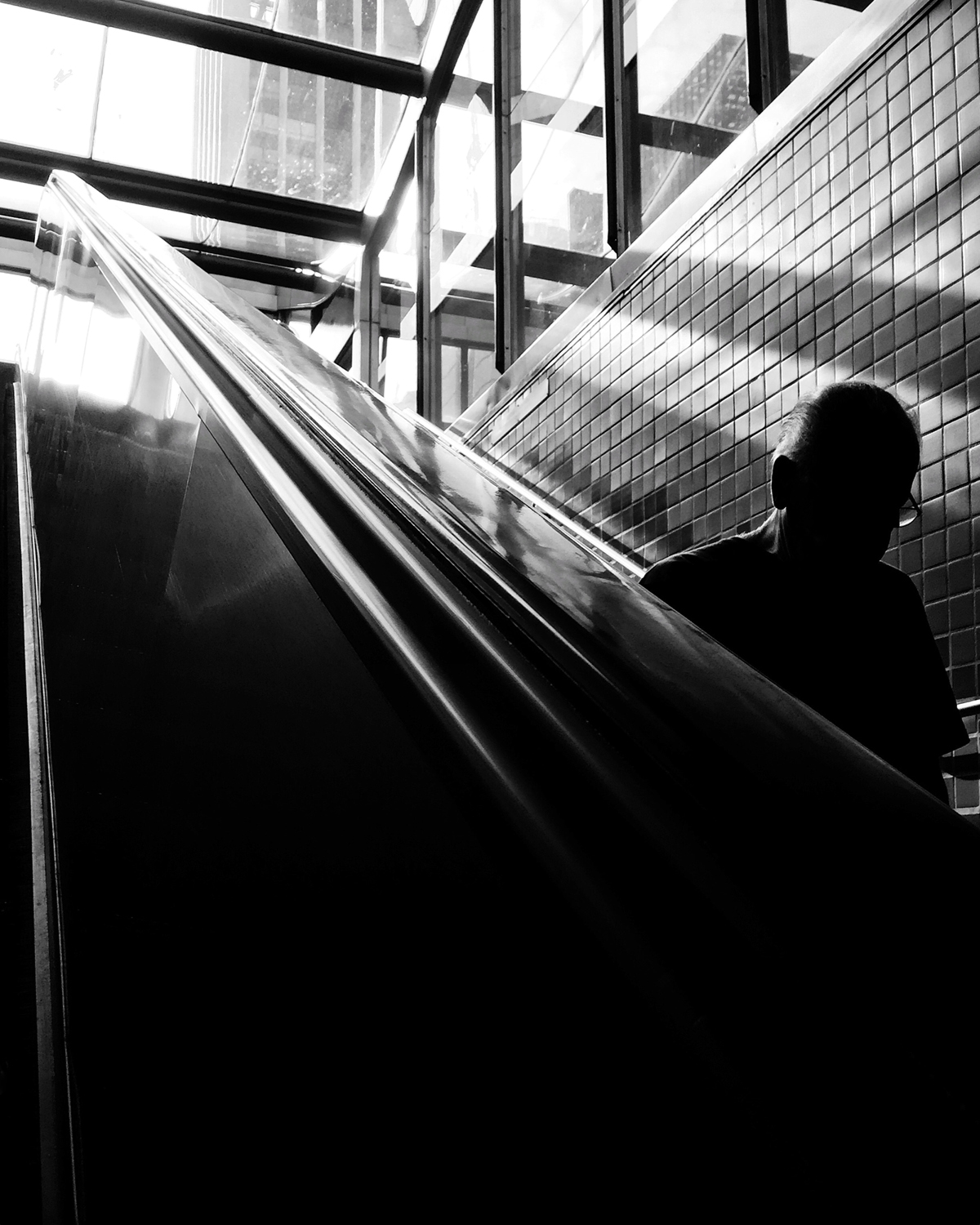
THE END
Leandro Leme is a photographic artist from São Paulo, Brazil. More of his work can be seen on Instagram | 14&15 Mobile Photographers.

by Antonia Baedt | Jan 20, 2017 | Antonia Baedt, Stories, Storyteller, You Are Grryo
I am a storyteller by profession. Most of my inspiration comes from everyday life. I believe our lives are made of a never-ending string of stories that connect us all to one another – if we are just willing to listen. By sharing pictures on Instagram, I feel like I am offering something in return to people who share their stories with me. Through their pictures, I can walk along an Australian beach, sit on a rooftop in New York City, dip my toe into the icy waters of Canadian lakes or sit in a cozy café in Warsaw.
11 months ago, I created an Instagram account as a task assigned to me by my employer. I never saw the point of social media, where most people seemed to connect digitally to people they knew in real life. But Instagram has turned out to be a window to the world. My Instagram feed is a collection of ideas, coincidences and random things, that catch my eye during everyday life. I am not a photographer and I don’t have a theme or style to my account.

Finding beauty in ordinary things is what inspires me most.
About half of my pictures are very spontaneous. I often stop during the day to take a photo with my mobile phone. This was one of those crappy days at the office. Nothing had gone according plan and I left a lot later than I had hoped to. Carrying a pile of paperwork, my bags, and the trash, I walked over to my car, just wanting to get home. The bright yellow caught my eye. After a moment’s thought I disposed of the trash, threw my stuff in the car and spend the next 15 minutes bent over the stairs with my phone. Strange stares by passersby ensued. The next day the leaves were gone. Someone had “cleaned” them up.

The Mummelsee in the German Black Forest area engulfed in fog.
Besides everyday hidden beauty, bad weather has become a welcome photo opportunity. This picture of the lake is the outcome of a business trip. I was supposed to bring back picturesque photos of a popular tourist area. Well, as you can probably guess by this picture, that was a complete disaster. It rained for 3 days straight. I fell in love with the dreamy mood of the thick forest all engulfed in fog. Now, I go out hunting for fog and rain on purpose.

Chasing fog during a visit in die Central German Uplands, where I grew up.

Creating and learning as I go is one of the gifts IG has given me.
Not all my pictures are things I find along the way. The other half of what I post is planned. Copying artists that inspire me is my way of learning. I don’t necessarily aim for an identical picture, but I like the reverse engineering part of it. Everyone who spends some time on Instagram will spot some patterns of what is popular. Lamps, candles and fairy lights are a current trend. I thought: you can’t judge something you haven’t tried. So, I went on a photo walk with a fellow Iger, all set up with lamps and fairy lights. We realized quickly that taking an atmospheric picture like this is much harder than it looks.

After living in Cologne for many years, I am discovering it all over again.
A fellow Instagrammer has a similar picture of the church in his gallery. It was taken in the city I live in. I was so fascinated by the angle, that I started looking for the position he must have taken it from. A fun way to explore places you pass by every day.

Sometimes I have to wait a while for the perfect opportunity to take a picture I have had in mind for a long time.
Pictures rarely turn out exactly the way I intended. If they do, they take a lot of planning. As with my experiments, I constantly look for locations and great light. The tracking of weather, seasonal changes and the movement of the sun have become part of my every day routine. Because I don’t have a lot of time to take pictures, I use that info for the occasional quick hunt – by leaving an hour early for work to stop along the way, for example.

Connecting with people all over the world and making new friends is what makes Instagram so special.
Last but not least, my new-found Instagram friends are a wonderful way of creating new pictures. I am lucky to have met a few in real life. It is amazing to see how different the pictures are that you each took of the same things. I have learned a lot about photography and how different Instagrammers see the world around them.

“The frozen tree”
I often get up before sunrise to chase for that magical light only the rising sun can give you. This picture was taken on a Saturday morning. It was freezing cold. The morning fog had just lifted and everything was covered in ice. Billions of tiny crystals reflecting the harsh sunlight. If I can’t go with a fellow Iger, I like to go alone. I can walk and stop at my own pace and just enjoy the silence of a fresh day. This time I had a few of my IG friends with me. We connected via a group chat app and were each out hunting for the perfect picture that morning. All in different countries but all looking into the same rising sun.My photos are snapshots of my life’s stories and my way of bringing my visual ideas onto paper, so-to-say. As a storyteller in the movie industry I think in pictures every day and connecting stories to them comes very naturally. But I am not a photographer for photography’s sake. I take photos to have something to share on Instagram. Something I like and something I hope a few people can connect to, so that the strings of their stories and mine can intertwine.

by L. Bird | Jan 13, 2017 | Ladybird, Stories, You Are Grryo
Paris, late at night last September, tangueros are dancing on the plaza of Opera Garnier. It takes a second to stop. Then, time flies. Tango, the dance of love captured me, again… While I was taking photographs, an idea emerged. If reasons of Love resist to any understanding, would it be possible to identify the signs of its discourse as steps of dancers always appear to me – like a vibrant illustration of this intimate dialogue between lovers?

How is it possible to apprehend what love is? The mechanisms of love are a mystery… Raymond Carver, a fabulous American short stories teller wrote ‘What We Talk When We Talk About Love.’ With such a title, he might have found the best angle to approach what love is. Not love itself but what is involved in love… Also, Roland Barthes, a French philosopher tried in ‘Fragments d’un discours amoureux’ to analyse the language of love, elaborating, a kind of analytical board of its various figures as Dmitri Mendeleïev classified the chemical elements… According to Barthes, the discourse of love is highly ‘choreographic’ and he compares them to movements of dancers. Analyzing this discourse, he called the logic of the reason and applied it to the things of heart. It seems to be a seductive way to find some kind of answers to this mystery. ‘Tangueros’ series tries to take its part in that wondering quest.
…
Tango is easy to be seduced by. The body language of this dance and its music are certainly very powerful, even if it would be easy to confess this is a personal belief coming from its practice… The colors of Tango are black and red, and nobody ignores that red roses have thorns too. Each step of this dance could be the last one. It is a dialogue converging to a climax. Even if one of the dancers is supposed to have the lead in this conversation, any of the dancers is free to stop its course for a moment, introducing a new step to this sparring verbal. That’s how the dance occurs. In that way, Tango steps are really close to the figures Barthes identified. Re-reading ‘Fragments d’un discours amoureux’ while editing the photographs of this series was like growing evidence… This series of steps was like some of the loved ones.
…

* This shy distance of the very first steps when dancing is not already in question.

* This precarious balance after, what is not yet a couple, starts dancing. Dancers need these steps to know each other.

* The mistaken steps, and how the dancers need to adjust their movements when in doubt about the meaning of dancing together, are still in the air.

* This impossible try to let it die, inspired by this primitive fear of being hurt. How thrilled it is to hold on to, despite of it. How sweet it is too, to quiet each other in this need of trying, at least, just trying.
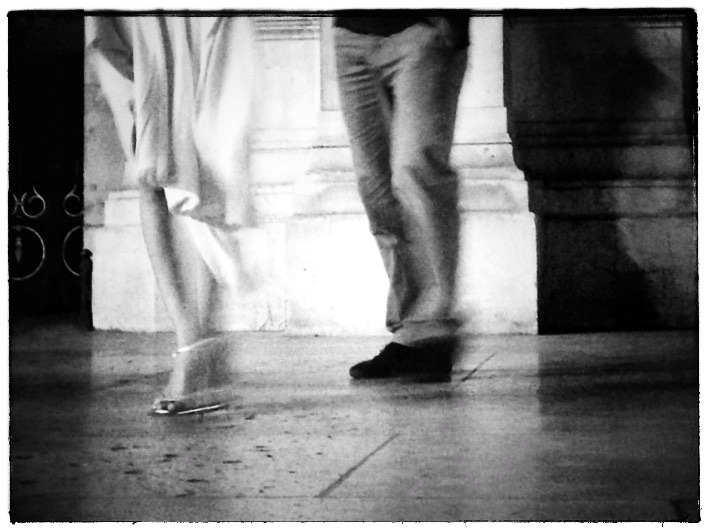
* The very first dancing steps. They are not perfect but something is happening and it’s already taking both of them beyond words.

* How this new grammar of steps provides the energy to give and ask for more that they might think at the very first sight. Sensations don’t allow them to think any more – steps are coming from something deeper.

* The need to take a break, just like birds on a wire. It goes too fast and finding breath to articulate is difficult. Suddenly, fear and blossom of dancing are intimately melted.

* These moments of grace where feelings can only be expressed with free movements, just like an air of bandoneon. Imagination took its part in this earned and sublimed trust, coming from previous steps.

* There is a belief in this balance which seems perfect. One move and the other is able to finish the sequenced steps the first dancer suggested. Intimacy is pushed to its limits in what seems a perfect match: bodies are vibrating, hearts are beating strongly and minds are filled with pure sensation. For the time of a dance, bodies and souls are extended to a kind of eternity as if this moment had to last for ever.

…
Steps and signs. Step by step, a grammar of these signs is enlightened: its subjects, its objects, its sequenced sentences, its rhythms, its breaths and its poetry. Unless what it is about remained a whole mystery. Photography captures moments; images are like signs of living love, living lives. Photography is itself a grammar helping us to approach deepest mysteries as close as we can. As a photographer, it is a never ending dance…
L. Bird, Paris, December 2016.
L. Bird is an independent photographer and film maker based in Paris [France]. Her work is all about storytelling, whatever it concerns [whether photography, series or short-movies]. Her work’s aesthetic is mainly inspired by street and documentary photography, but in such a manner, that it always turns her images into contemporary tales…
You can find her on : Instagram | Website

by Grryo Community | Jan 5, 2017 | Stories, You Are Grryo
I like Kandinsky’s idea that we all have an inner need for expression. Looking at pictures on instagram, it’s cool to look at individual people’s offerings and try to work out what they are trying to say to the world. There is no good or bad art, just images that speak to you more than others, or speak to you differently on different days or when you are in different moods.

‘spartacus and his army of freed slaves’
So when I make a picture, it is expressing something of how I am feeling or something I want to say to the world at the time of making it. It is cool to make abstract images because people can interpret them in any way they wish. I like to make images with balance in colours or in shapes, but then sometimes the words chosen to go with them can distract or help make a connection with another person.
The first image called ‘spartacus….’ I like because it is stark black and white with a slight tinge of red. It seems to show strength emerging out of a vague past, and yet also I hope it makes people feel connected to this vast sea of humanity.

‘two hemispheres unite’
It’s also wonderful to play around and arrange shapes so they make something geometrical and yet playful and whimsical at the same time. In ‘two hemispheres unite’ it seems to show that the whole world of instagram is uniting people who like to look at pictures and find some sort of commonality. We are made happy to be part of the big wide world and yet we all have our unique take on it.

‘throw dishes at your head’
Look at how harmonious the shapes seem to be in ‘throw dishes at your head, cos it’s what you were expecting’ – the shapes fit together, the colours speak of harmony but the title shakes people up and makes them think,(I hope) of what happens when your safe little world crashes in on you.

‘you may be fast, but I’m quicker than you’
When I take a real picture and glitch it up a bit I want people to question what is ‘real’ in this world. There are so many possibilities for parallel worlds, doors opening to different perceptions, unexplained phenomena and strange occurrences which should make us full of wonder at this glorious thing called life. I called this “ you may be fast, but I’m quicker than you” just because I want people to laugh and then sit back and think, what is this thing called life and why do words make me smile?

‘spacebar’
The last image has some text in it, (space bar) – I love images with text and shapes in them, as words can be so tricky, have so many meanings and yet have no meaning at all. The colours and shapes make me happy as well as the possibility that there is more beyond this life, some sort of spirituality, that we all seem to be searching for.

‘slow shutter speed’

‘try cutting through the mask’
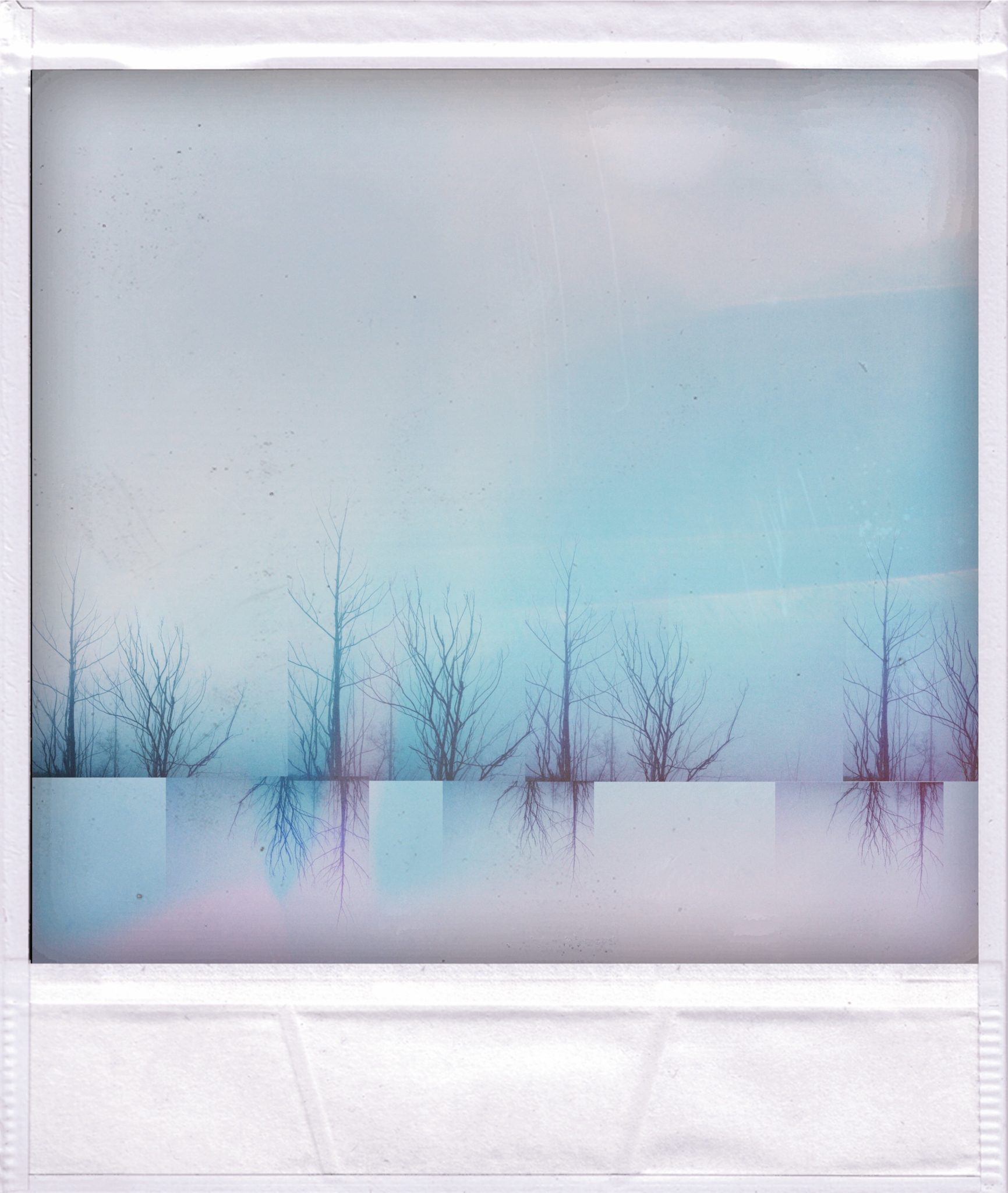
‘heart beats slow’

‘orange, lime and mandarin’

‘from the upside down’
Kandinsky again said it best when he said that art was the soul, without which the body cannot be healthy.
Find more of Fin’s work on : Instagram | Website

by Grryo Community | Dec 27, 2016 | Stories, StreetPhotography, You Are Grryo
A Self-Interview: Shuko by Shuko

Photographer and Clients (Yokohama, Japan)
ONE: At what point in the development of your photography do you think your images will start to speak for themselves?
Henri Cartier-Bresson is known to have said, “Your first 10,000 photographs are your worst.” I believe him.
I admit that I feel a long way off from having a consistent “body of photography work,” but in
the meantime, repeated efforts and studying others’ works feel very important.

Self-portrait with Water Lilies (Naoshima, Japan)
TWO: Whose photography have you studied? Which photographers and their works have impacted you the most in times to come?
Some photographers who come to mind are: Richard Avedon, Henri Cartier-Bresson, Annie Leibovitz, Peter Lindbergh, Alfred Stieglitz, Hilla and Bernd Becher, Helen Levitt, Diane Arbus, Imogen Cunningham, Dorothea Lange, Cindy Sherman, Graciela Iturbide, Denis Brihat, and Rinko Kawauchi.

Ready for the Journey (Toulouse, France)
It doesn’t seem like a huge list, but I ended up focusing on painting within the major of Visual Arts during college, so my inspirations are drawn from many disciplines.

Abstract Self-Portrait (Japan)

New Year’s Eve in Chinatown (Kobe, Japan)

Street Dancers (Shinjuku, Tokyo, Japan)
In particular during high school, I was really influenced by Richard Avedon. His 1994 retrospective at the Whitney Museum of American Art, “Evidence 1944-1994”, brought with it the opportunity to see him speak at a special lecture for high school students. My family lived one hour south of New York City, so I hopped on the train after school one day and was blown away by the photographer’s raw energy. His honest portraiture, which captured the uniqueness of the human spirit and body which was printed at a bigger-than-life scale, has left a lasting impression on me.
Before seeing the retrospective, I remembered reading about him and his work in magazines. He loved the photographed image so much that he apparently used to tape film negatives to his skin and expose them under the sun until the images burned onto his skin.

Lady with a Purple Parasol (Tokyo, Japan)

Univers Parallèle – Parallel Universe – 異世界 (Toulouse, France)

Portrait of My 91-year-old Grandmother (Tokyo, Japan)
Another photographer I met during my time studying abroad in southern France had a deep impact on me. His name is Denis Brihat, and he’s a multi-award winning nature portrait photographer who created his own chemical process to highlight the beauty of his inanimate subjects on photo paper. He was an advisor to a black and white photography class I took, and I will never forget him talking about a ten year period during which he was very quiet, developing his own method of photography. At that time, I understood better the possibility of portraiture in a wide range of categories.

Mt. Daisen (Tottori Prefecture, Japan)

Falling into an Underground Pocket (Tokyo, Japan)
THREE: You’ve talked about printed photographs by photographers you admire. How important is the printed product to you? We live in such a digital age now – how do you reconcile the difference between the wide availability of digital images and the decreasing number of images that exist as prints?
Yes, the tactile product holds a lot of significance for me since I trained as a painter. But it’s a whole different category of product now, more than ever, it seems. Ansel Adams is known to have said, “Twelve significant photographs in any one year is a good crop.” These days, that would sound absurd to hear from the mouth of a celebrated photographer! I currently live in Japan, but before I came, I was creating paintings that included photographic images printed on inkjet tissue paper. If I were still making those, twelve “photographic paintings” in one year would indeed be “a good crop”.

Gate 2 at Izumo Taisha Grand Shrine (Izumo, Japan)

Open Sesame (Kanazawa, Japan)

Rooftop Poolside (Barcelona, Spain)
FOUR: What about travel? How long have you been traveling, and what do you look for these days when you travel?
Traveling is of utmost importance to me! I’ve been traveling since I was a baby, and I have come to accept that I am always living “abroad” in one way or another. That probably sounds like an unstable mindset, but being at peace with it has opened up a lot of freedom in my thinking. For example, it allows my creative work to be more of a home to me than any geographic location. So actually, the longer I go without working on my creative projects, the more insecure and “homeless” I feel. In photography, the process of photographing and the process of editing for public viewing help me feel “at home” even if I am in a country that I wouldn’t identify as my native country.

Contemplation (Oita, Japan)
FIVE: How would you describe your relationship to architecture?
I’m pretty sensitive to spaces. Deep down, my interest in architecture is about one day finding or making a “real home” where I can work on many kinds of creative projects – a deluxe art studio. But in general, I’m keenly interested in how people build homes and other buildings for specific uses. It’s linked to my fascination about how people make themselves at home in the world – how they make themselves comfortable (personally and professionally) in order to live secure, fulfilling lives.
SIX: What inspires you, and what do you hope to inspire in others?
I’m inspired by a life lived with resolve – the ability to find and determinedly put into practice many original solutions amidst life’s challenges. It’s possible that I photograph people and places that speak to this topic. I hope that in the long run, my work can be strong enough to encourage people to live bigger than what they believed possible.
To see more of Shuko’s work, please visit her Instagram
Shuko is a fine artist who lives in the Tokyo area. Having moved to the metropolis this year (2016), she is finding the need to redefine her creative practices, including her photography.

by Grryo Community | Dec 22, 2016 | Still Life, Stories, You Are Grryo
Thinking back on my childhood, I realize photography has always been part of my family. As I was growing up, my father was often taking pictures. I remember the excitement when he brought back the developed images that we all gathered to look at. My mother was in charge of sorting and creating albums that we later enjoyed looking through while talking about the memories. Through my early years, I had access to different kinds of Instamatic cameras. When I entered high school I inherited my older brother’s Minolta SLR when he bought a newer one. That became my first camera.

During my 20s, I became an avid traveler, and while spending a few days in Hong Kong, I invested in a manual Nikon FM2. I started to create visual diaries of my travels. I was shooting mostly in color, not just the obvious sights of interest; but rather, everything including people, food, landscapes and detailed architecture. Inspired by travel magazines, I would create photo scrapbooks upon my return home, and photo albums with added “tokens” (i.e. admission tickets, menus, travel documents) and occasional short stories.


‘Untitled Cabaret DR’

‘Where Dreams Are Made Up’
In my later 20s, I completed my first photography course, “Beginners B/W Developing and Printing”. A couple of years later, my husband landed a job in New York and we made the move. As a stay at home mom, I would take occasional trips into the big city …and what a city!
I continued to take B/W printing classes as well as lighting, and a couple of portrait classes at ICP (International Center of Photography). It was an exciting time. I felt it was a true inspiration to be around other photographers and enthusiasts, feeding off their creativity. Unfortunately, it was very costly.
During this time I was exploring self-portraits as well as still life combined with some human form. Anybody that has done a series of self-portraits knows the time and hard work that goes into it. With this being said … I eventually wore out the time-release crank on my camera and decided to make an upgrade.


“Curled Up”
Just like many parents, I have taken numerous photos of my daughter as she was growing up. I began using Tri-X film, then slowly moving over to color film and eventually graduating into digital photography in 2006, when I bought a Nikon D300. By the time I got my digital camera, my daughter was already in high school and her interest in posing for me had diminished. Now she is 23, and I am lucky if I get one opportunity per year for a portrait session with her, although sometimes that is all it takes.


‘In sync’
Three years ago, I got my first smart phone. My interest for iPhone photography grew with easy access of availability to the phone. I started to explore a variety of editing apps, and found Hipstamatic to especially be a great tool in expressing what I wanted to capture in the beauty of nature. I shoot mainly in the comfort of my backyard, and other nearby surroundings.


‘Flirtatious’
As much as I like portraits and the idea of shooting portraits, it’s challenging because my preference as a photographer is to study and explore as I work patiently with my subject. I find it difficult to focus on shooting while interacting with a model at the same time.
 ‘Bulb and Bottle’
‘Bulb and Bottle’

‘Bulb & Bottle #2’
When photographing nature, I allow myself time, and the process becomes a slow unfolding discovery of the object. Most often I shoot outdoors, incorporating the use of different papers as background to avoid clutter and to help isolate the object. I explore different angles, turning the object continuously trying to find the right perspective for my shot.
After throwing out a dying poinsettia this past winter, I discovered a tiny dry leaf that resembled an embryo left. I do believe in pre-visualizing images, but with phone photography, I work differently. For me it is important to have an open mind about what I am shooting. There are many variables when shooting outdoors in ambient light and therefore it will frustrate me if I can’t capture that image. I try to assess and from there let my creativity take over. If time and light allow, I shoot extensively. Better too many than too few, because I may not be able to do it over.
 ‘Interrupted’
‘Interrupted’
A couple of months ago I had some friends over, and one of my guests brought me a lovely flower arrangement with miniature daffodils. As they eventually wilted, its leaves and flowers turned a faint golden and were cascading over the glass brim in which it was planted. In what is clearly garbage to most, I saw photographic potential. After separating the bulbs and untangling the leaves, I ended up with a bulb that looked like someone with a “bad hair day.” Sitting on my back porch, I was shooting against a black cold pressed artist paper, exploring shapes, patterns, lights and shadows as they changed while I turned it around. Finally I chose a self-made spray-painted silvery background – the reflections at times gives the impression of me using a background spotlight. I think my choice of shooting in Hipstamatic Classic with the John S lens enhances this effect. I really like how the new improved Hipstamatic 300 allows me to adjust the shutter speeds. I rarely shoot in “A” (Automatic). Changing speeds manually gives me better control and I almost always use a software flash, to give the image a bit of “kick”. I strive to get as good of a negative as possible, to cut down on any post-process editing.
 ‘Barren’
‘Barren’

I try to convey moods, or bring out expressions interpreting feelings of my own at that moment, whether spontaneously or triggered by collected experiences and old memories. When looking through the viewfinder, I see natures’ little secrets unfolding, and these discoveries make me feel very special and truly grateful to be able to recognize them. I often get so intrigued that I lose track of time.
 ‘Journey’
‘Journey’
You can find more of my work on Instagram as Swash63.
Susanne was born 1963 in Luleå, Sweden. Married and we have one daughter. After Highschool she went on to an education in “Sewing and Design”. She have worked various jobs including as a photo assistant. Moved to New York in 1997. She has taken several photo courses at ICP (International Center of Photography) incl. Bnw printing, lighting, portraiture and alternative processes. Currently, she works as a manager in an Outerwear Boutique.
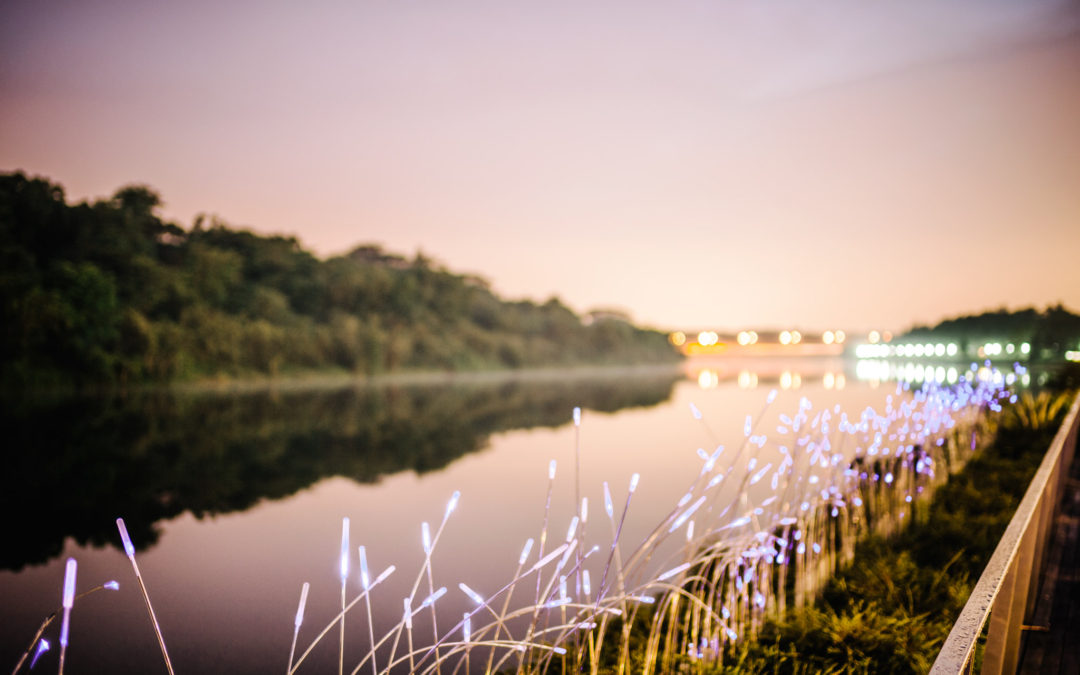
by Grryo Community | Dec 16, 2016 | Stories, You Are Grryo
Reflections in the night light
Photography by Jin @Visualdivision, Written by Adam Lo.

I see myself as both a photographer and an explorer. I like to find peculiar locations all over the city in my search for that unique shot. In a small city-state roughly 2/3 the size of New York and with a population of 5.5 million, Singapore manages to strike a balance between development and preservation of nature sites. Furthermore, recent efforts have been funnelled into projects that harmonises modern living with fauna. Therefore, sites like the Punggol Waterway litter all over Singapore, providing me with opportunities for unique shots.

Opened in 2011, the Punggol Waterway functions as a waterfront and a leisure park for residents of various ages. Cyclist and joggers are a common sight, however, in dusk the park can be strangely quiet. This serenity incubates the perfect condition for long-exposure shots, a technique I am still trying to perfect.
There is only so much our modern eyes can perceive. Conditioned in highly lit city environments, we sometimes fail to pick up details in a low light. However, aided by a trusty DSLR, one can bring out the underlying beauty; surreal landscapes in spectrums of light we can never imagine.
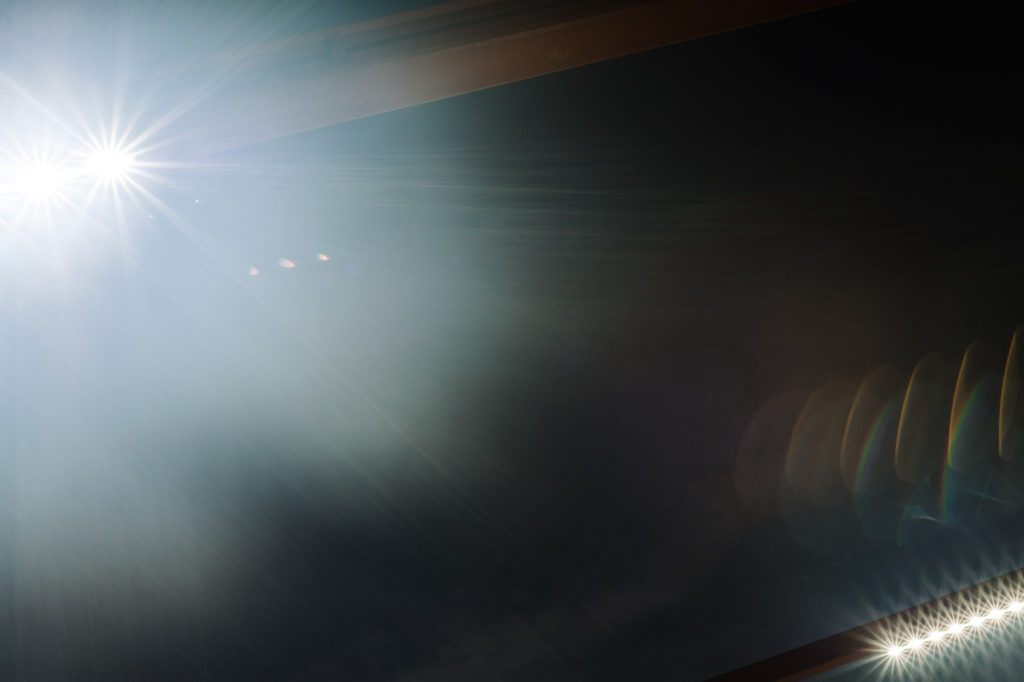



My general interest is architecture and hence, I always had an eye out for geometry and structure. As I threaded along the waterway, I came across a bridge crossing, with light adornments lined along the red struts, providing me with a perfect balance of contrast, as well as a sense of structure imposed on a ceiling-less sky. The bridge also gave me access to a commanding view of the waterway.

The dusky scenery, coupled with the loneliness, gave me a sense of melancholy I have never felt before. In fact it felt nothing close to eerie, but it was like I was happy to be alone. Being an extroverted person, I enjoy the company of others. However, when I take photographs, I believe in solitude as I like to keep my relationship with the subject a strictly visual affair. No verbal contact whatsoever. The bridge was one of such cases.
As stated previously, I keep an eye out for architectural beauty. However, I see value in buildings that are under construction. In some cases, they convey a sense of progress. Even In a highly-developed city state, scenes of construction are common in Singapore. As strange as it sounds, scenes of construction and cranes reflects the general attitude of the people; Good is never enough. This is in our blood. We never settle for enough, we try to build ourselves in any way possible. We embark on new projects and challenges given the opportunity.
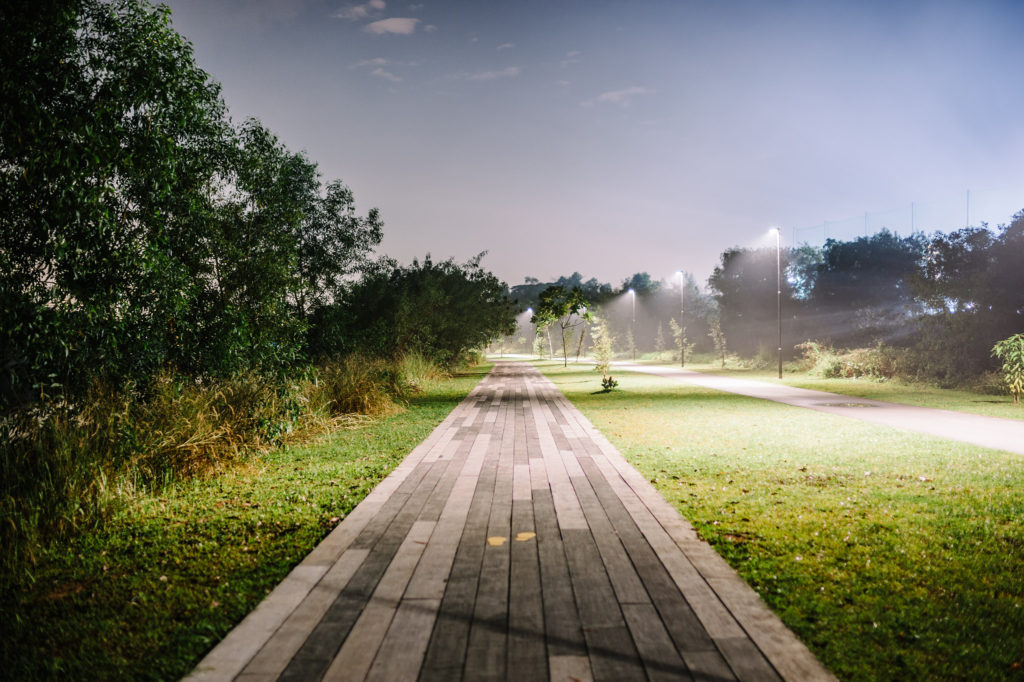


The waterway was brightly-lit all through the night. In the absence of joggers and pedestrians, it was as if the lights wanted to show off the park. Singaporeans are indeed industrious and hardworking people, and in a Chinese influenced society, we never liked subtlety. We never cut corners when it comes to showing off, an act of which I champion.
The waterway path has led me to places i have never seen, and has brought me experiences I had never had. In a way it was an opportunity to reflect and a learning experience. In terms of technicalities, this experience has taught me new skills and a whole new way of seeing things.

by Abraham Carrasco | Dec 9, 2016 | Abraham C, Stories, Storyteller, You Are Grryo
For 6 months trip by the Otomi – Tepehua,
Indian zone of the state of Hidalgo, Mexico area.
Most people who allowed me to portray their faces do not speak Spanish.
They have their own native language. They harvest coffee,corn,
peas, beans etc …
The small stories that accompany each portrait are words, thoughts and
ideas from both sides.
Just as the photographs were taken, a translator told me what they thought.
This is a sign of the profound strength of our state, Hidalgo.

The sun, the only witness who saw the afternoon’s work, marked my face more than my husband. The night came only to ask “What did you do? What’s to eat?” No one more than the sun, insolent, asked: “How much do you have to work today, so anyone will notice?”
 “Above, always above.”
“Above, always above.”
We see the light. We prefer because we care for others, because we do something eternal day to day. Above, the place we come from and where we are going. Where the routine is forever and always the same. Here in this heaven, it helps us all to be one. The light comes and enlightens us; leaves us at night, because the next morning we will know that this, too, is the afterlife.

My eyes see nothing, always the same, always the field, always the rain. I am a survivor of my office, rain flooded fields. Hope fills my hands with mud every morning.

You see my face marked? You’re looking at all the lines on my face?
I do not understand what you say. I want to know who you are and why you came to my home to see me.
Wood has struck me with oils and textures. He did not return and could not stop to wait; wood waits for no one.

I had no chance to dream.
I’ve been in the field since the beginning of my memory. I know no change. In the field there are no options. The field is routine, very noble and very beautiful. But without options, they believed that the earth would not hold, and showed them the power the land gives me when I’m in the harvest.
They need to know their opportunities out of the field, but someone has to show them that they cannot be afraid to leave the place where they were born. So I’m here in front of you. I know my chances.

Road over the streets:
pavement, dirt, dust…
I hope for someone, just hope. Road and wait.
I am what you have forgotten: the street pavement, dirt and dust.

The field has always been my way of life. Water, wind and poverty have always gone ahead. My happiness does not survive with corn and coffee. Flying with the annual harvest where happiness flooded every home. Buyers come quickly to see us. We cannot always sell at our discretion. We are not always happy.

I cannot look at you.
You are a foreigner and nobody knows where you come from.
Who buys from you?
I have stove ash all over my mind and you do not stop using that thing to steal my face…

Raided under my cheeks, under my cheekbones, survives a smile that stands forged by fire brick. The lips that support it have been sullied, wasted and returned to sully the river. Angry eyes that hide more than joys.

Steal my soul because you cannot steal anything else.
My body is dust.
The illusion age.
I was born in a world full of neglect and violence. Rob my soul because men want my body. Rob my soul because it has no economic value; it is useless here. Take her. Transform her into hope and light.
With special thanks for your participation in this project:
Timo Viejo(@timoviejo)


























































































































































